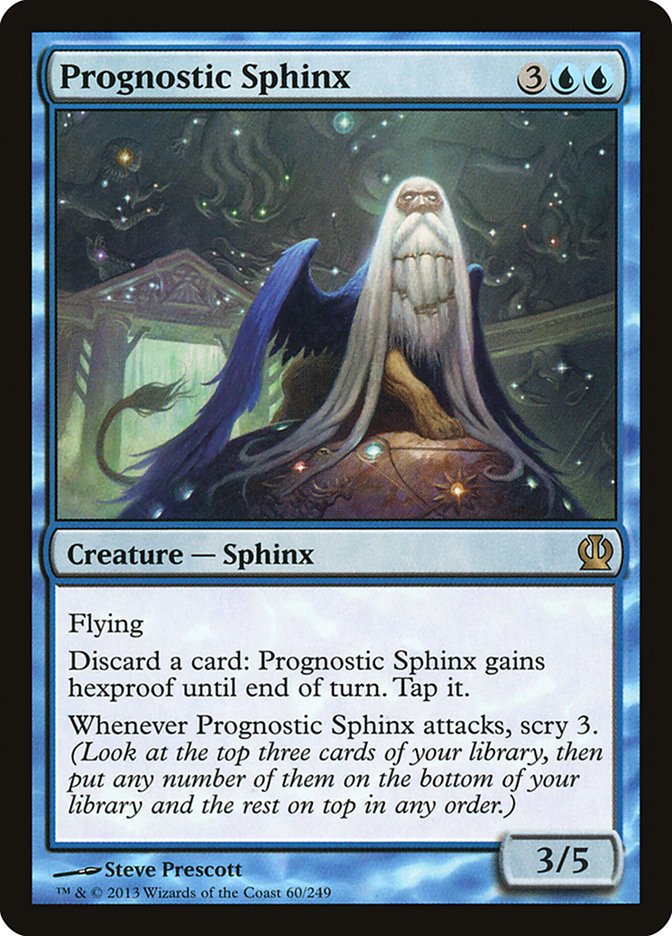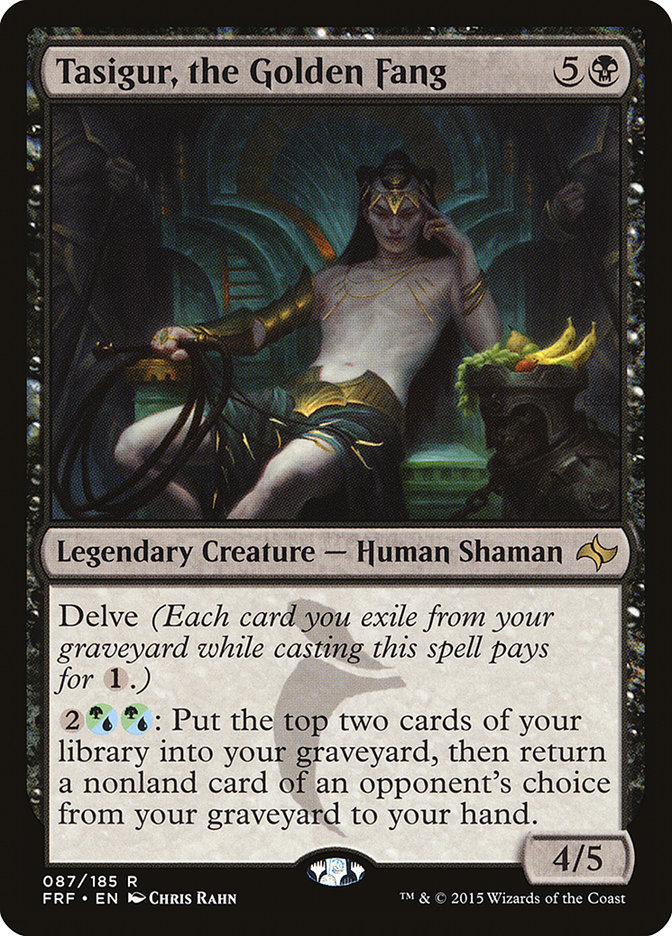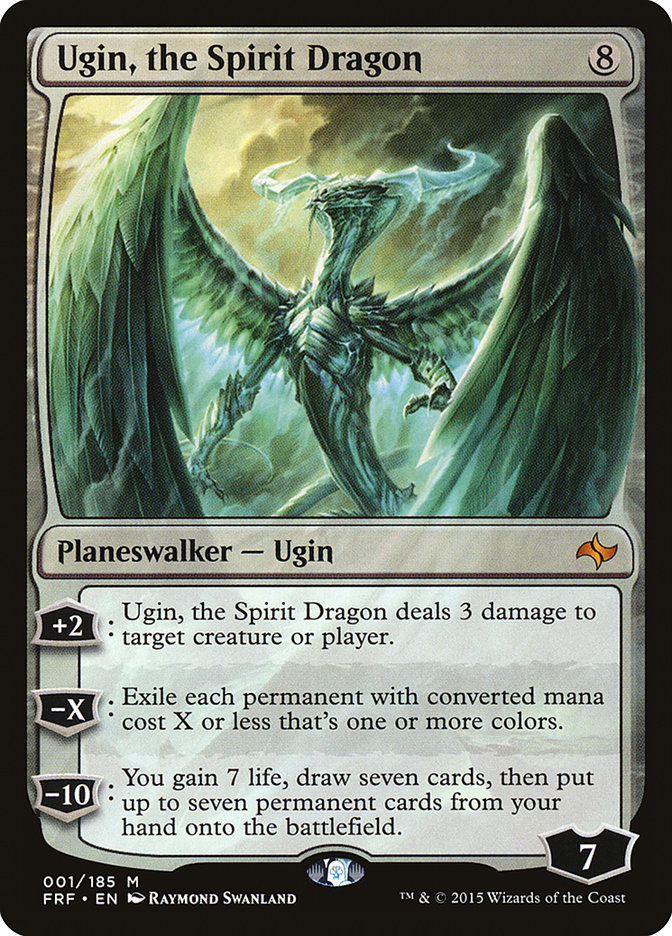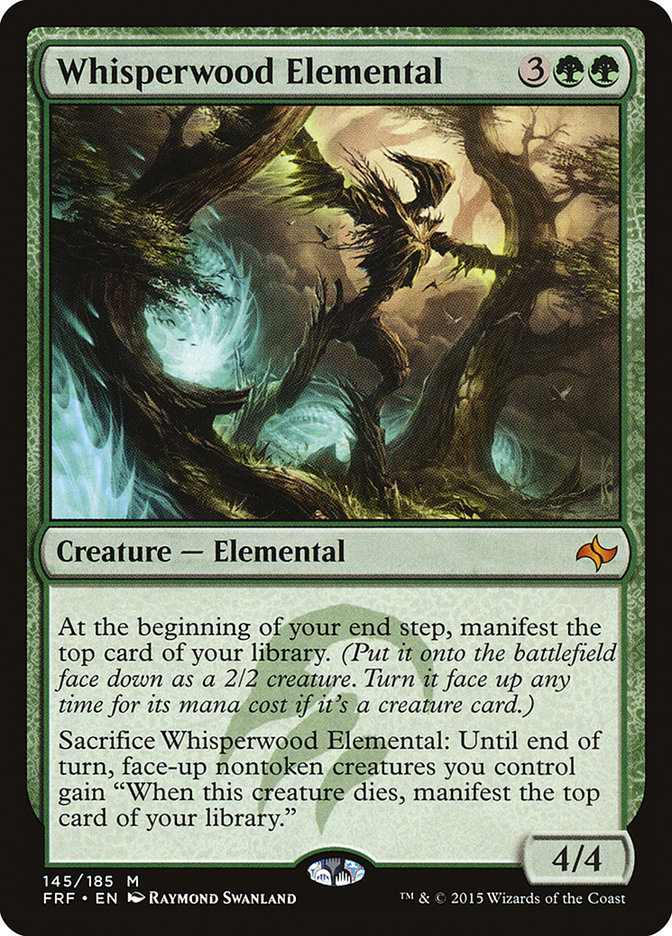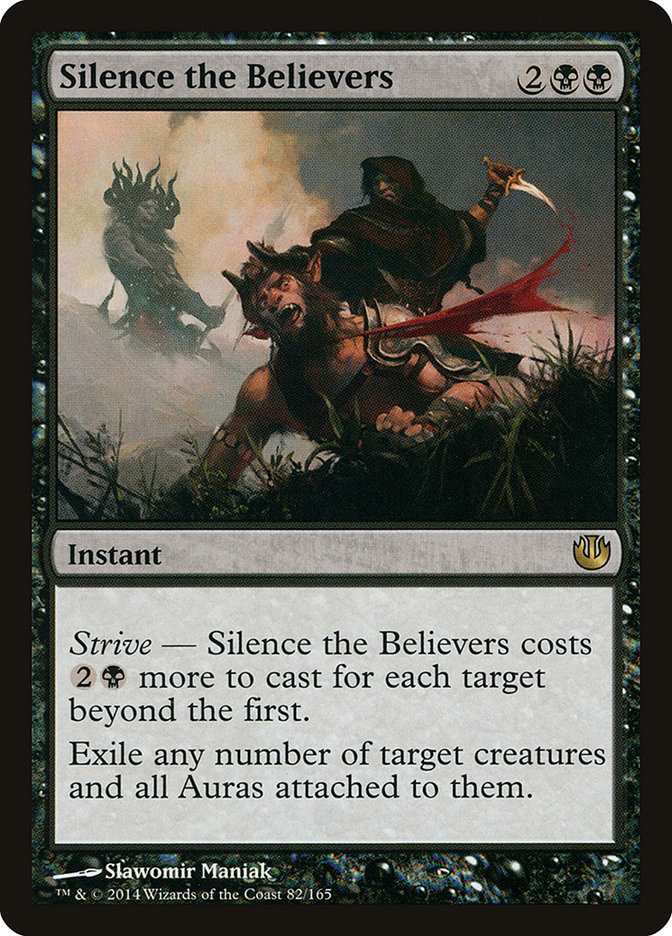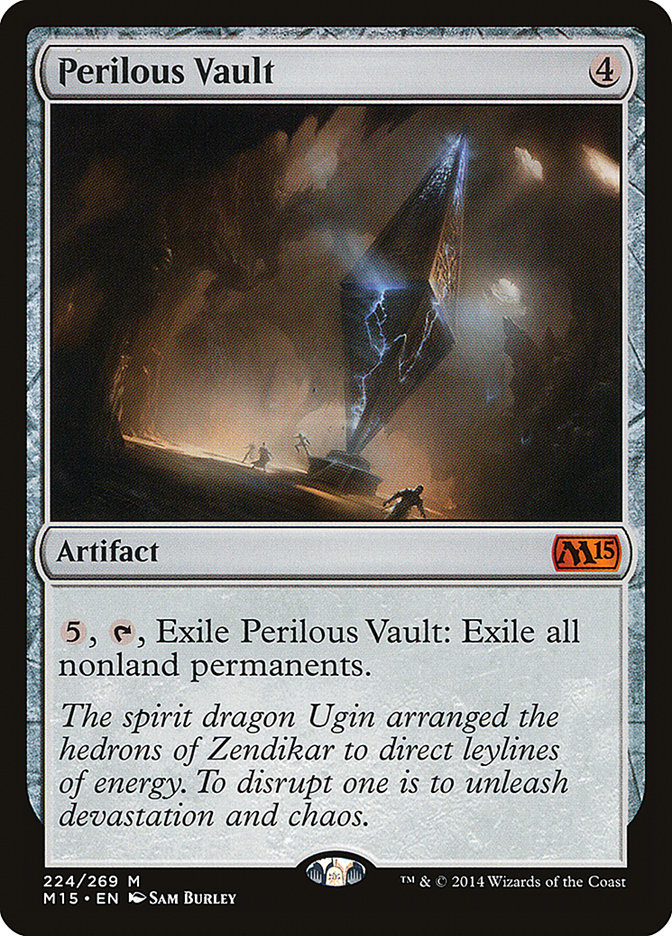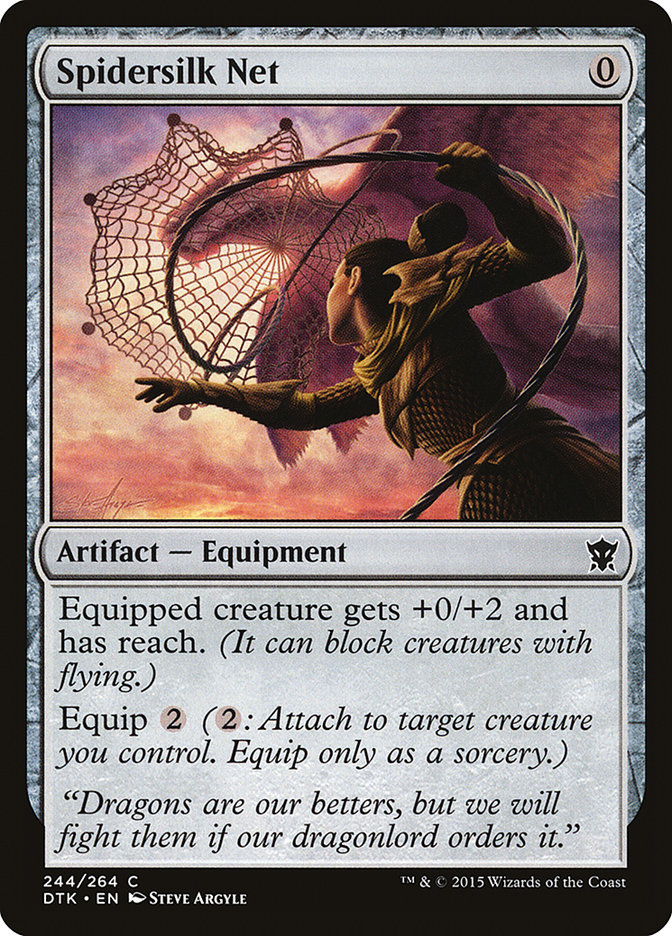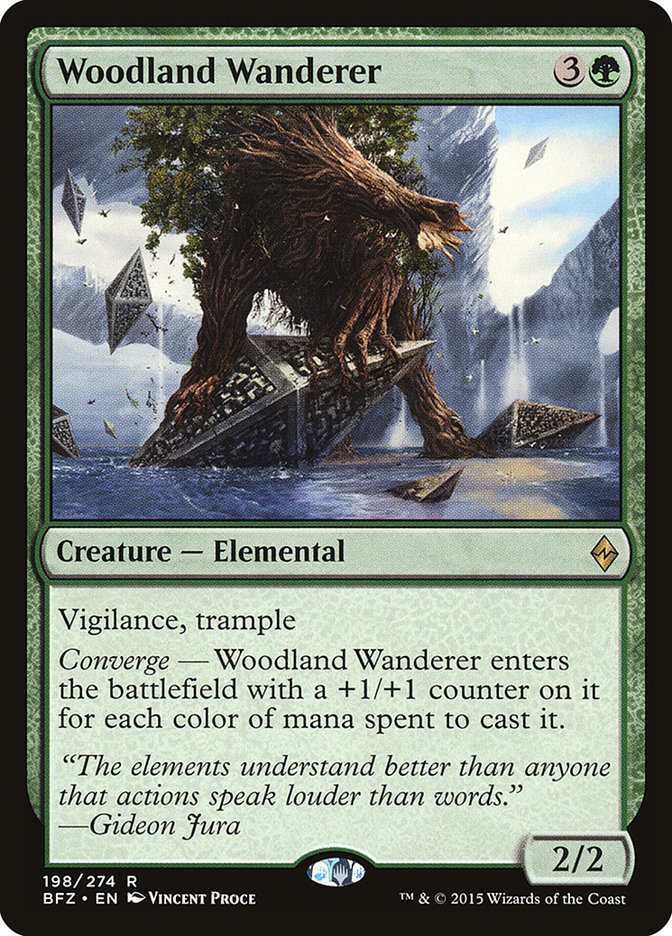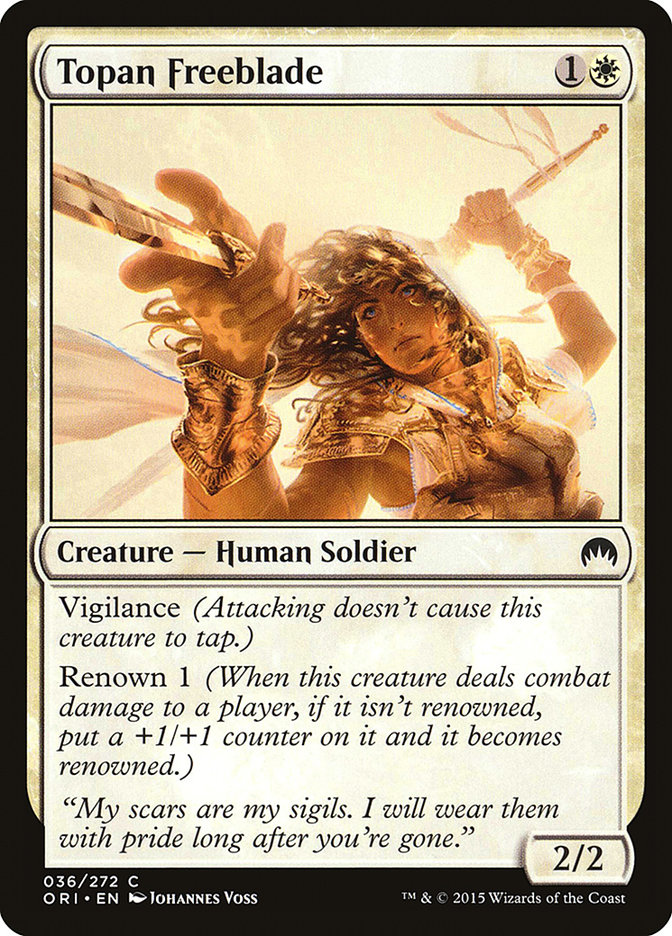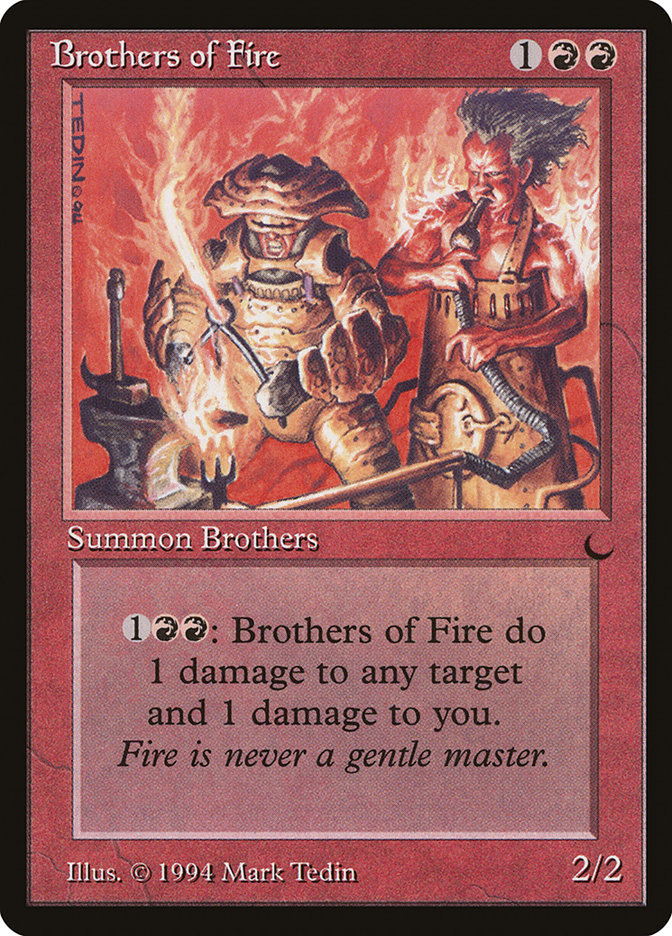By the time you read this, it will be the first day of 2016.
What a difference a year makes.
2016. It still sounds a bit crazy to me that I’ve been playing Magic this long. A little bit longer than 22 years. This year was perhaps my most dramatic
year when it comes to playing Magic. I’m exactly the kind of person who spends more than a little time looking back on the past, but generally I’ve hoped
to avoid doing it as an exercise in navel-gazing. What I’m most interested in is looking back to see what can learned.
Here is my 2015.
January
I started out January not qualified for the Pro Tour. I had gotten back on to the Tour for Pro Tour Khans of Tarkir, but despite a money-making performance on Team TCGPlayer, I was just shy of
requalifying. I was still on Team Ultra PRO for the prep work for Pro Tour Fate Reforged, our first Pro Tour as a team. But it stung a little to be working
with so many talented people but not be qualified.
It was to the grind, back to the PTQ circuit.
As fate would have it, I would qualify at the very last Pro Tour Qualifier of the very last old-school PTQ season. There was a lot that went into
this Q, but a huge part of it came from working out the problems of the R/G Aggro matchup for U/B Control. Countless hours were spent just running this
matchup against anyone who would let me use them as a guinea pig.
This
was the ‘enemy’:
Creatures (28)
- 4 Elvish Mystic
- 2 Polukranos, World Eater
- 4 Stormbreath Dragon
- 4 Boon Satyr
- 4 Fanatic of Xenagos
- 4 Goblin Rabblemaster
- 4 Heir of the Wilds
- 2 Ashcloud Phoenix
Planeswalkers (2)
Lands (24)
Spells (6)
Sideboard

I felt like I would almost win. But then it wouldn’t happen. After setting my sights on this deck, I turned it from a match that felt hopeless into one
where I was still a dog, but a dog with a little bit of fight in him.
I won the PTQ, defeating a R/G list like the one above in
the semis.
Here was my deck:
Planeswalkers (5)
Lands (27)
Spells (28)

There are some exciting things about this list.
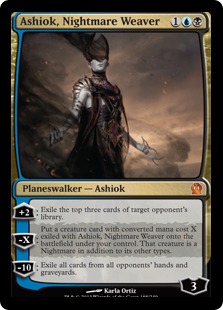




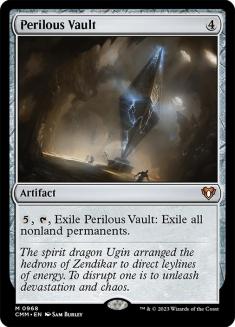




In that moment, the game was still all about Abzan. The above cards reflected that reality.
In the finals, I narrowly defeated fellow Madisonian Andrew Tenjum. It was pretty epic. Ashiok, Nightmare Weaver did a lot of great work, though.

If you look closely, you’ll see the monstrous Fleecemane Lion on my side and another Fleecemane Lion on an Ashiok. It also went monstrous, and if it
hadn’t, I definitely would have lost that game.
As I noted in my article on the event, Lukas Carlson put it
this way on Twitter:
@AdrianLSullivan and @ATenjum G3 of the
finals of this #PTQ these games have been bonkers. #mtg
— Lukas Big Al Carlson (@LukasC88) January 4, 2015
Magic is great.
Later that month, I attended the Super Sunday Series Championship.
Quite honestly, this was one of the most amazing events I’ve ever been to. Words can’t do it true justice, though I definitely tried to do so in my article on the
event. The incredible sense of camaraderie and community that the event fostered was just amazing, and I don’t even think I had the full
experience that most people had going to the event! For most people, this event would be their first time at WotC headquarters, so that would also be a
huge bonus for them to attend. I’d already been, but even without that adding to the experience, it was truly just wonderful being at a small, intimate,
well-run event.
I played U/B Control with only one change, in the sideboard.
I took out:
I added:
Fate Reforged
was new and shiny, but I didn’t add an important card:
I viewed the card as a “bad” Perilous Vault. This was very, very wrong.
I spent some time trying to figure how to improve the U/B Control deck, but at the time still hadn’t fully gotten my head around Ugin. I played a ton of my
deck for fun, and had one game with the deck so epic that I heartily recommend you read about it at the end of my article on the SSS, and I spent a long time talking
with Michael Bonde about the ins and outs of Death and Taxes. By the end of the weekend, I didn’t feel drained, I felt invigorated.
If you ever have the chance to play in one of the Super Sunday Series Qualifying events at day two of a Grand Prix, do it.
February
February. The shortest month. This actually may have been the case for me. I went to two events that month, the TCGPlayer Regionals in Chicago, where I
played Burn, and Grand Prix Memphis.
Things were a bit different for me after the Sunday Super Series. I’d gotten a lesson in the power of Ugin, the Spirit Dragon, and I took it to heart.
There were still a lot of things I was trying to figure out about the format, but it was really in the “inches.” In the work leading into the Grand Prix,
I’d figured out a lot about what I liked about where I had the deck, and Ugin had essentially pushed out Perilous Vault, at least in part.
But those final details… As more and more testing was done, one card from Fate Reforged was having the biggest impact on me:
Eventually, I had had enough. I took out a card from my list:
In its place, I placed another copy of this card:
It was a last-minute change. As a rule, I’m generally not into those. But it ended up working out pretty well. I finished at 12-3 in 16th place, which both
pleased and disappointed me all at once. It pleased me because, all things considered, it was a great finish. It disappointed me because I really felt like
the deck was better than that finish. My three losses boiled down to me messing up, a very bad draw, and a nightmare matchup.
That’s how Magic goes, though, really. You can get unlucky and lose. You can get a bad pairing and lose. You can mess it up. I’ve certainly won my fair
share of matches for the opposite reason, so you have to take the good with the bad. Still, I loved how the deck was positioned and was excited to continue
to play it.
The Perilous Vault change felt basically incredible the entire tournament. This was one of those decisions that seemed like it worked out for the event.
Here was the list for Memphis:
Planeswalkers (5)
Lands (27)
Spells (28)

There were some big changes in the list after Fate Reforged was more integrated into the deck.
Here is what came out:




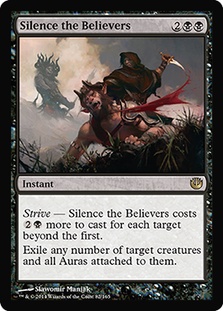
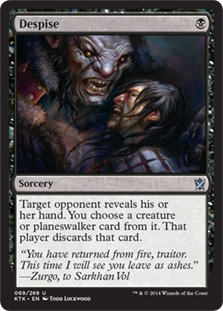
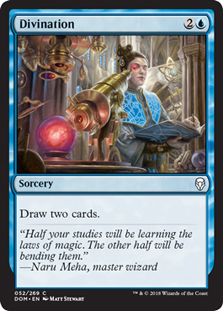
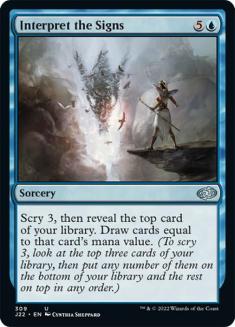

And here is what came in:
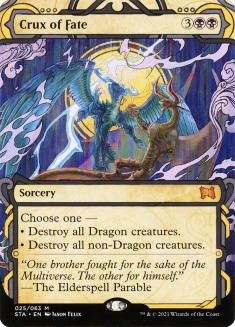



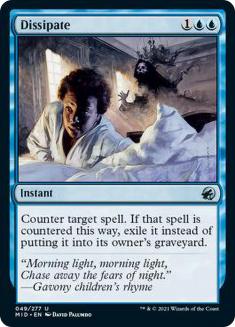


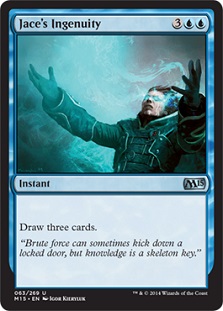

The oft-misunderstood Interpret the Signs went to the sideboard, and most of the rest of the changes were just gentle nudges of one kind of answer or card
advantage for another. This would be the way my particular build of U/B Control would continue to change throughout the year: just adjusting to the moment
based on what it was aiming at, but keeping itself fundamentally the same at the core.
March
In March, the most important thing that happened for me in Magic was easy: Dragons of Tarkir came out. While I did a lot of prep for
Standard, more than anything else, I threw myself into drafting. Thankfully, something happened during the prep that really solidified my focus. Andrew
Tenjum crushed me in more than a handful of drafts.
He wasn’t the only one to crush me, but he did so most often, usually on the back of a single card:
The card really blew me away. Initially, I didn’t think so much of it, but ultimately, what it managed to show itself to be was a Limited powerhouse.
Moreover, it ended up being the centerpiece for my favorite deck in the format, “Formidable Red,” which eventually supplanted U/B as the favored Draft deck
among the most experienced drafters in Madison.
Another card that ended up making a huge impact was a reprint in the set:
Back when it was first printed in Zendikar, initially people were using this card as a kind of support card to their more controlling decks.
However, as time passed, it became a surprise card for the more aggressive decks in that format simply because it mucked up combat so much. In Dragons of Tarkir, the Red Formidable deck was easy to make, but often it had very not tough creatures in it. Spidersilk Net could
completely change things. In one draft, I ended up with this deck:
Creatures (14)
- 2 Summit Prowler
- 1 Flamewake Phoenix
- 4 Gore Swine
- 1 Zurgo Bellstriker
- 1 Swift Warkite
- 1 Atarka Efreet
- 1 Vulturous Aven
- 1 Kolaghan Aspirant
- 2 Sabertooth Outrider
Lands (17)
Spells (9)

When you’re running so many creatures who aren’t tough, the Spidersilk Net’s impact is particularly impressive. It doesn’t look like it is going to affect
the game on paper, but in practice, your opponent ends up having to work so much harder to get rid of your cards. When you are hitting as hard as you hit
when you run four Gore Swine, the extra effort that it takes an opponent is incredibly taxing.
I didn’t end up going to many Magic events that month, but this prep, drafting in Madison, and discovering something that was powerful and repeatable in Dragons Limited was invaluable.
April
My Magic life changed in April 2015.
I got my first major event Top 8 at Pro Tour Dragons of Tarkir in Brussels, when I finished fourth. I’ve already written about the event, but I don’t know
if I said enough about it even there.
This was a life-changing event for me. I’d tied for the Top 8 of another Pro Tour, but missed on breakers, and I’d had a similar near miss back at an old
US Nationals, back when that event paid out nearly as much as a Pro Tour. These finishes were back in my olden-days heydays of ’99 to ’00, when I was a lot
younger. There was even another kind of near miss slightly earlier in Rome, where I was 9-1 when my deck was stolen and my tournament derailed. These high
finishes meant a lot to me, but the near miss is heartbreaking too.
My friend and Team Ultra PRO teammate Craig Wescoe was only one of several incredible teammates that helped me in the preparation for that event, and it
truly was one of the biggest thrills of my life to make it to Sunday. After the event, Craig said to me that he thought I had a real shot to hit Platinum,
and I decided to try to go for it.
I stuck with U/B Control for the event, and it was remarkably unchanged from previous iterations.
I took out:



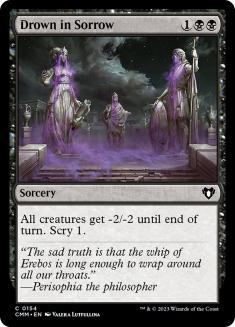

I put in:
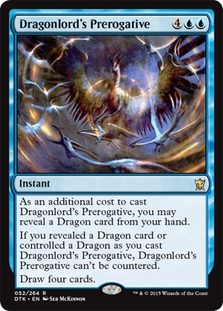


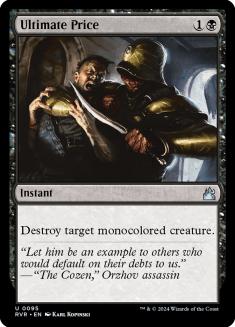

I also reworked the mana just a little, making it slightly more basic-friendly. Here is the list I ran:
Planeswalkers (5)
Lands (27)
Spells (28)

I’m incredibly happy with where the deck ended up, with all of the preparation I put into the event, and how it turned out. One of the most meaningful
things about this event, in terms of the legacy it will have for the work I put into events, is that I really had a level of intimacy with both of the
formats for the Pro Tour, and I had even more of a sense of what I wanted to be shooting for at any future event.
May
Inspired by Craig’s word, I started what I would call #TheQuest4Platinum. I would chronicle the
quest in a series of blog-style posts on my Facebook page, along with anecdotes from the
long ago past. I think it had some of my favorite bits of short writing I’ve ever done, and if you love Magic stories, I heartily recommend you check it
out.
In the beginning of that story was the trip of an epic Magic journey. I drove from Madison, WI to Detroit to catch up with my friend Jennifer. We then
drove to Toronto for a GP, and from there, I drove back down to Detroit, to Youngstown, OH, onwards to Pittsburgh, to New York City, to Atlantic City, down
to Washington, D.C., then westward home, with stops in Louisville, and more.
I saw an incredible amount of wonderful people on the trip and played in a pair of Grand Prix to reasonable results. I was disappointed that the finishes
weren’t stellar (164th in Toronto, 70th in AC), but I could identify some of the mistakes of it all. Not simply mistakes in a game, but mistakes going into the event internally.
Some of these are obvious things. “Get enough sleep” is advice that you can read in countless Magic articles. It doesn’t make it any less important.
Perhaps less obvious, though, is don’t set yourself up for a situation where sleep might be hard. If, for example, you know you are going to sleep in the
same room as someone who has an absurdly loud snore, bring earplugs. Don’t plan on staying at someone’s place if they are going to throw a party that
night.
Beyond the simple things like that, though, I really didn’t properly think things through during the event. For example, in the Sealed portion of Grand
Prix Atlantic City, I had two different decks that I could play, a very aggressive R/W deck and a much more controlling U/B deck. Overall, I like R/W quite
a bit more, but most of my prep had been done in Draft, and very, very little in Sealed. These are quite different formats, however, and if I had done the
work, I would have been able to recognize that my U/B deck was simply the better deck. I sideboarded into the second deck every match. Perhaps if I’d
played the right deck to begin with, I might have done better than 7-2 to make Day Two.
The difference was quite stellar by the time GP Vegas hit.
For that event, the Madison crew had literally put together a facsimile of Modern Masters 2015 and had done countless hours of Sealed and
Draft with it before the set was even out. I didn’t make Day Two of GP Vegas, but I felt so incredibly prepared. My deck on the first day was so bad for
the format that it was among the worst I’d ever seen for the format. Still, it was exciting to be at such an incredibly huge event, and to know the format
so intimately that you could give friends advice on their deck and later hear from them all how useful it was.
Wisconsin, at large, did incredible at that event, with four players in the two respective Top 8s, and one player, Matt Severa, winning the Super Sunday
Series qualifier. It felt pretty awesome, as though all of our efforts had really paid off.
I stayed in town for another week with my friend John Stolzmann, playing Magic and preparing for the next event.
June
June was filled with Magic. The TCGPlayer Invitational in Vegas and two Grand Prix, one in Charlotte and one in Providence.
At this point, I was basically sticking to my guns in Standard, again rocking U/B Control.
Planeswalkers (7)
Lands (27)
Spells (26)

This version of the deck had shifted the focus of its gaze to take out green-based decks with a fury. In so doing, I decided to eschew even bothering to
give the red matchup a good go for game 1, and I wasn’t even giving the matchup its full due for a full set of three games.





Beating a green deck when you have four Ashiok isn’t that hard.
Of course, there wasn’t just Standard on my plate. I was also trying to crack Modern.
Team Ultra PRO did a great job at that event, with Paul Rietzl and Patrick Chapin really showcasing two very different decks. I was quite happy with what I
played, and though the deck really still needed some work, it was pretty awesome.
Creatures (8)
Lands (25)
Spells (27)

Here was the deck tech I did on it:
I ended up at a respectable 44th place. Still, though, it was less good than I was gunning for. Providence, on the other hand, was a total disaster as a
tournament, though I did have a lot of fun going out on the town.
Of course, there was another thing that happened…
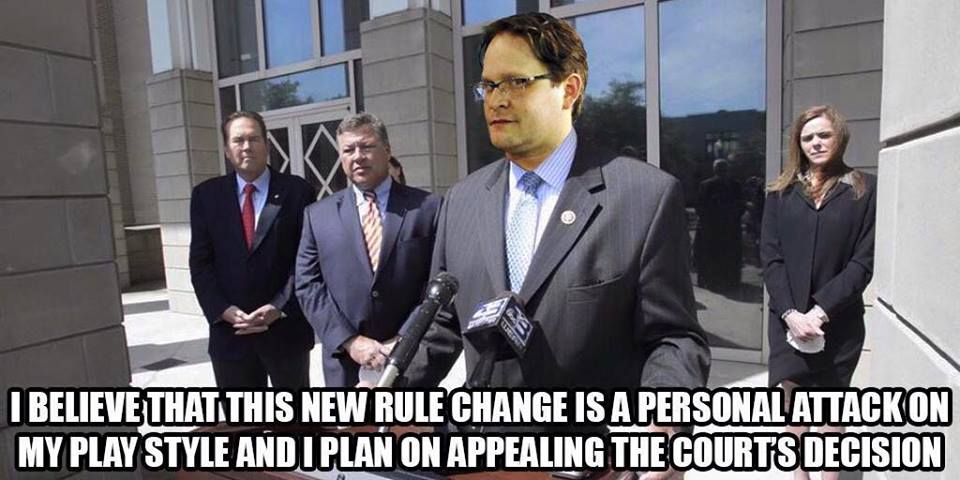
Wizards changed the rules about how you’re allowed to play on camera. I totally understand why they did it, and
after Brussels, they told me it was coming. Still, it was a hard adjustment.
July
Like March, July was a blur of prep. This time, it was Magic Origins.
One of the things that became really clear to me as we did the prep leading into Magic Origins: I didn’t have the same kind of
feel for the format as I did in the previous one.
This was the case for the Standard and Draft portions of the format.
It wasn’t that I hadn’t done the work. Nearly all of my free time was spent prepping. It was different than that.
I think the problem I was having is that I was looking at different things that were good, and they were just so close to each other in value, I wasn’t
able to figure out which was better, and in which moments one was a better choice and in which moments another was.
This is a fundamental problem to solve in Magic. In the terms of this current moment in Magic, it is like looking at specific builds of Jeskai Black/Mardu
Blue/Esper Red/Grixis White and trying to determine if you should play that specific build or you should play Atarka Red or Rally. They are all excellent
potential choices, but just because they are all good, it doesn’t mean that one choice isn’t simply superior, based if nothing else than on the metagame of
the moment.
The Pro Tour in Vancouver was at the very end of the month, and on into August.
I didn’t make it to the “August” portion of the Pro Tour, though.
I went into this in more detail in my article, but one of the moments that
really captured where things were at for me in understanding Magic Origins came down to these two cards:
Here is what I wrote shortly after the event:
“Without question, Woodland Bellower is the stronger card. It truly is a monster of a card, sometimes providing nine power in two bodies, often turning
the game on its head. It is also green, my least favorite color in Magic Origins. Topan Freeblade, on the other hand, was a two-drop… and a powerful
two-drop at that. Topan Freeblade could be the beginning of a powerful W/R Aggro deck or a W/U Skies-style deck even though it doesn’t fly. Even if it
were in a less-compelling color combination, like W/B (of whichever variety), it wouldn’t be asserting for a green deck, all of which were generally
fine, but none of which were exemplary.
But, Topan Freeblade is no Woodland Bellower. Topan Freeblade is a great card, and Woodland Bellower is an incredible card.
In addition, though, one of the things I’d felt was a potential lesson of all of the work so far was that you really, really need to have truly
powerful cards in your deck. No matter what your archetype, you could easily lose to someone who simply dropped something amazing if you didn’t have
something to help pull things back in your favor. At the very least, Woodland Bellower was a truly powerful card, and while I didn’t really care for
the various green decks, I wanted to have access to a great card and I didn’t mind simply abandoning it if another deck made itself known.
Ultimately, I ended up in G/U (Semi-)Tempo, and if I were to rate my deck, I’d give it a B- or maybe even a C+. I feel like the entirety of my Pro Tour
Magic Origins experience can be summed up by this anecdote from the first game:
I was taking over the game with Willbreaker, when my opponent cast Tragic Arrogance.”
That Pro Tour was literally my worst finish ever at a Pro Tour.
Thus ended my July.
August
I stayed a few extra days in Vancouver to enjoy the city, but then it was back to the States.
It’s a hard thing to shoot for something like I had on #TheQuest4Platinum and then miss. A part of
it is the emotional impact of it all. Another part is the financial side of it all. I finished at 37 Pro Points, well short of the 46 I needed to make
Platinum. The divide between Platinum and Gold in terms of rewards is pretty huge, but just because you make an investment of time and money to try to
accomplish something, it doesn’t mean it will pay off.
When we say “mistakes were made,” the very real consequence of that was Pro Tour points, and with less mistakes, I would have made it. While true, that is
quite similar to someone playing golf at The Masters saying, “If I played better, I would have done better.” Well, duh?
Aside from trying to go over the results from the Vancouver trip, there was, as always, more prep. I was teaming with Brian Kowal and Craig Wescoe for the
Team GP in Detroit. As always, Madison put in a ton of work on the Limited, and I felt pretty good about my format knowledge. All told, the GP went okay,
but it wasn’t a slam dunk, nor even really a good free throw. Collectively, we did fine, but we could have done better in some subtle ways.
I could feel the burn out on me. A lot.
It was time to take time off to figure things out.
September
Aside from a single event, I took off a full six weeks until the Battle for Zendikar Prerelease. Then, it was head-on into draft, draft, draft.
For the prep for this Pro Tour, I was doing something different. Zvi Mowshowitz and I came together to organize a team based around Madison and New York
that we were tentatively calling Team Mad Apple. Zvi and I had worked together before, and the goal we both had was to find a collaboration that could
really work. Geography had a lot to do with it, and I gathered together the handful of Madisonians who were not already on Team Ultra PRO to join together
with Zvi’s New Yorkers (along with Alan Comer, the only qualified member not in Madison and New York), and we started our prep.
Sharing Constructed ideas is always important, but putting in the work on Draft is always important. Madison takes drafting very, very seriously, and there
were something like eight or nine qualified players living in town between Team Mad Apple and Team Ultra PRO. Drafts were happening constantly from moment
one onwards.
It felt good to be in the thick of it again after that break, and it felt good to be working on forging something new. I knew that what I wanted; after my
break from Team Ultra PRO, I was to try to forge something that could give anyone in Madison a place to hang their hat if they were qualified for the PT.
I’d definitely seen people hung out to dry before, not able to get brought onto to a more established team and isolated from the other people in town. The
work leading into the upcoming Pro Tour felt good, especially because of where it was going to be.
October
Madison was going to have a Grand Prix and Milwaukee a Pro Tour.
Wow.
The bittersweet part of this was the knowledge that GP Madison was going to be the last GP scheduled for Steve Port, a man who I feel is largely responsible for
the Magic community that Madison enjoys. Simply put, he is one of the best things to have ever happened to the game, and I knew he would be
missed.
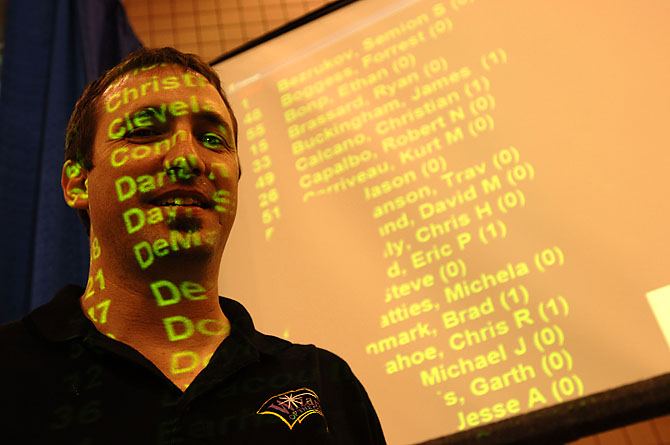
Plus, he makes some damn fine Magic
products! #shamelessplug
I put a lot of work into my BFZ Draft game, and came out of GP Madison in 21st place. This was good, but I wouldn’t have minded one more win (though, with
my tiebreaks, I probably wouldn’t have hit Top 8).
A few days later, I went to Milwaukee for the Hall of Fame Induction Dinner. I’ve been a voting member for the Hall of Fame since nearly the beginning (I
didn’t vote Year One), and it was an honor to be my friend Alan Comer’s guest at the dinner. The dinner was wonderful, and there were a lot of people who
I’ve known for decades in attendance. It was a moving event, just for that.
Many people have talked about some of the notable things that happened at that dinner. For me, though, Willy Edel’s speech was the highlight:
I didn’t vote for Willy on this ballot, but during his speech, I found myself especially moved.
A few days later was the Pro Tour. Team Mad Apple was basically evenly split on two decks: R/G Landfall and Jeskai Black. I went off and played something
completely different:
Planeswalkers (3)
Lands (27)
Spells (30)

I loved the deck, and I ended up choosing it because it was simply great against Jeskai Black. It was solid against most things, but Jeskai Black felt like
a truly great matchup, and I basically destroyed every opponent who I played against with the deck, with the exception of my match against Jamie Parke
where I made a match-losing mistake in game 3.
I thought it was a great event, overall, though Team
Mad Apple didn’t do incredibly well. Zvi Mowshowitz would end up being our top finisher in 57th place, though Gaudenis Vidugiris and I both had the same
record. While it wasn’t spectacular, I did like how we all worked together, especially for a first go at it.
In one way, I was most excited for Owen Turtenwald’s finish at the event. While he and I have never been on a team before, Owen is a Milwaukee native, and
his finishing in 1st place after the Swiss was really amazing. I told the coverage team that if he won, the headline would have to be “Milwaukee’s Ow(e)n.”
One of the best things about the Pro Tour, though? Sleeping in my own bed. I made the 70-minute commute each day, and was glad I did. I doubt I’ll ever
have the chance again, and it made my day every day to wake up and go to bed at home, eating an incredible meal, and being beyond comfortable.
The month ended spectacularly, with an awesome event in GP Indianapolis, including a fun time judging the official costume contest at the GP with the
fabulous Gaby Spartz. I also have to give a huge shout out to my friend Tiffany for helping me with my awesome costume.

I tried to run Esper Demons again, but it really wasn’t the time for the deck. After watching Patrick Chapin play a spectacular match with Jeskai
Black/Mardu Blue/Esper Red/Grixis White/Whatever, I was really turned onto Monastery Mentor, and thought it was a card I would need to explore going
forward.
The event might not have gone well from a Magic point of view, but it was certainly one of my favorite events of all time.
November
November was relatively quiet.
Probably the most interesting thing that happened was deciding to drive down to Atlanta for the Grand Prix, rather than flying.
It was a great trip, and I had a blast hanging out with my friend JP down in Nashville on my way down. We talked a lot of Magic that night (mostly Modern),
and I was treated to some excellent hospitality and food.
I stayed with my old Cabal Rogue collaborator, Sol Malka, in Atlanta, and while the GP didn’t go well, I had a blast.
The most notable moment of the event for me was a match I played against Sam Pardee.
It isn’t on camera, but I convinced myself to keep a one-spell hand against him in game 1. This was just a horrendous mistake. Really, what I had done was
some fancy math that showed me that with my keep, my expected number of spells would be acceptable, and I justified it by thinking that with all three
colors of mana in my fully three-color deck, and with two Evolving Wilds in my opening hand, that it was an acceptable choice. Plus, my prior
knowledge of Sam’s deck had him on a very slow deck with multiple discard spells, and I was reticent to reduce my hand with a mulligan.
This is all bad thinking. While it was true that my expected number of spells would be acceptable, even with a mulligan, my expected number of
spells would be higher. Even though I had all three colors in my opening hand, realistically, I didn’t need to have all three for my deck to
function well. And regardless of the makeup of Sam’s deck, that doesn’t mean a specific draw is going to behave like that.
It was a bad mistake. The best thing to do in those situations is to own it and try to not only learn from it but also learn why it happened.
Still, I had a lot of fun playing and thinking about Sealed with Battle for Zendikar.
December
December was championship time. First, the TCGPlayer Championship in Milwaukee, and then back to Vegas for the #SCGINVI.
In both cases, I was still thinking about Monastery Mentor, though I was marrying the card to some of the ideas Michael Majors had been trying out. I loved
the card and I loved the deck, and ended up with this:
Creatures (13)
Lands (26)
Spells (21)

While I went into it in more detail in my article, there is
just a great deal of synergy in running Monastery Mentor and Painful Truths. Both cards are just strong, but in conjunction, they work incredibly well.
Ultimately, though, as I mention in the article, a full four
Monastery Mentor were just not great. In fact, I learned a lot from that event, and found I kept largely sideboarding into the same deck.
Why not just build that deck?
So I did.
Creatures (11)
Planeswalkers (1)
Lands (26)
Spells (22)

I really loved this deck. At the #SCGINVI, however, I didn’t do that great in Modern, and so I was relegated to the Standard Open instead. The deck is
still a work in progress, and I could see movement on a few cards, but overall, I absolutely love how the deck played out.
Right now this is my deck of choice, though a new set is soon to arrive to change the world.
I had a blast while I was in Vegas, being hosted by the incredibly generous Tavish Ledesma, seeing my friends John and Kevin, and having great fun with
Magic players at the event. AJ Sacher took me out for an incredible Mexican meal, and amazing conversations were had at numerous moments throughout the
event.
Vegas was just great.
However, if I have to think of anything that capped up December, it would have to be this:
Pertaining to coverage in 2016. pic.twitter.com/FlcHyHsld8
— Patrick Sullivan (@BasicMountain) December 15, 2015
Patrick, my friend, it has been an honor being in the booth with you. You are the man, mon frere. I can think of no better way to end a reflection on 2015
than to end on you.

